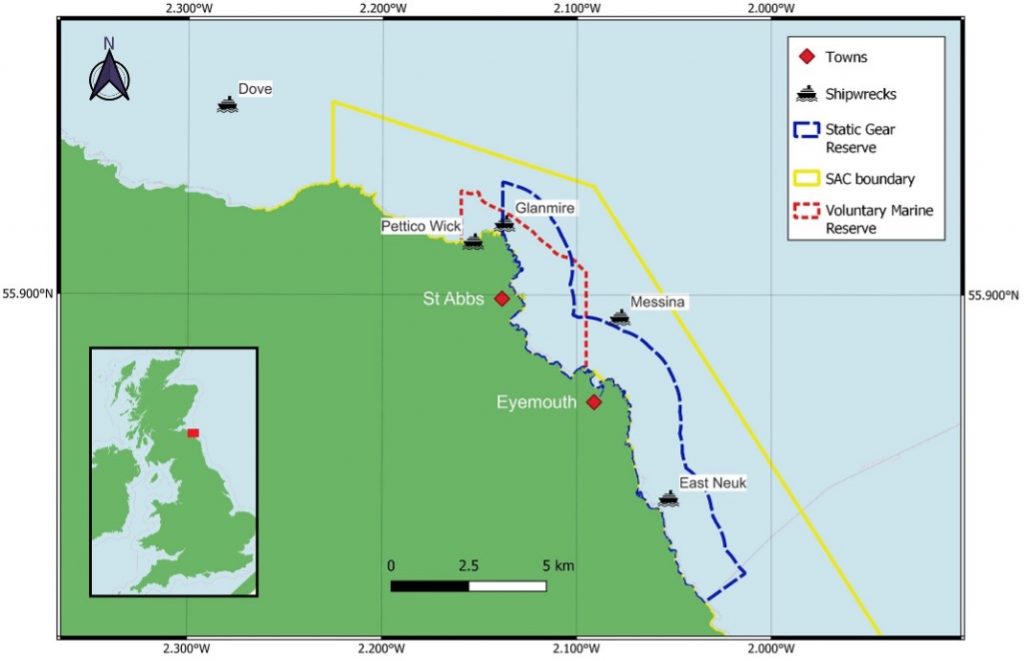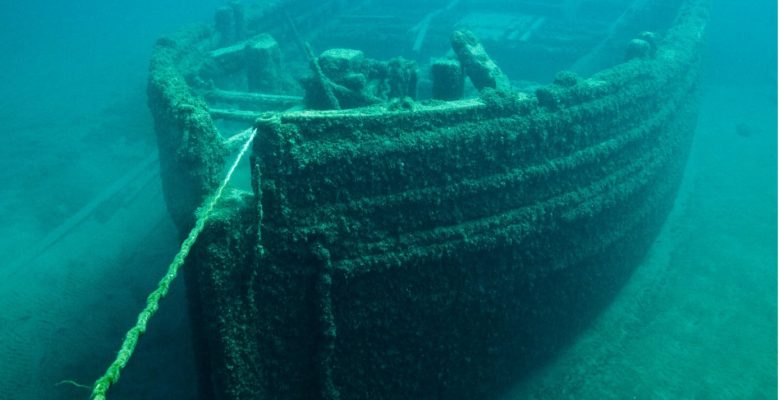Faced with the degradation of marine habitats caused by trawling, the UK’s estimated 50,000 underwater wrecks are emerging as oases of biodiversity. They provide a protected habitat for many marine species, challenging current marine management practices and highlighting the need to integrate these structures into conservation strategies.
by Laurie Henry
AN UNHOPED-FOR UNDERWATER SANCTUARY
Marine wrecks, long relegated to the status of historical relics, reveal a surprising ecological dimension. The study, conducted by the University of Plymouth and the Blue Marine Foundation and published in the journal Marine Ecology (Hickman et al., 2023), is the first to demonstrate the positive ecological impact of shipwrecks – and the areas surrounding them – in areas of high anthropogenic pressure.
The research was carried out around five shipwrecks off the coast of Berwickshire, all of which are thought to have sunk in the late 19th and early 20th centuries. Constructed from a range of different materials, they lie between 17 and 47 metres below the surface of the ocean, some in areas open to trawling and others in areas where certain types of fishing are restricted.

Location of British shipwrecks © Hickman et al., 2023
The research teams, supported by local boat crews, collected video images of the wrecks within a radius of 50 m, as well as of a few control locations more than 150 m from the wreck site. Images from all the sites were then evaluated with the researchers, who were particularly interested in finding species considered vulnerable to trawling.

Study method around the wreck © Hickman et al., 2023
The results are indisputable. The team found that the density of marine life around the wrecks was 240% higher than in areas where bottom trawling is practised. Within a perimeter of 50 metres around the wrecks, this density increased still further, reaching 340% more than in the comparative areas. On the other hand, in areas where trawling was prohibited, the abundance of marine life was 149% higher than on the wrecks and 85% higher than on the seabed located 50 metres around the wrecks.
These wrecks, some of which have been submerged for more than a century, have evolved into complex marine ecosystems. They provide diverse habitats, serving as refuges, breeding grounds and feeding grounds for a variety of species, from fish to corals, in the face of the disaster of trawling.
IMPACT OF BOTTOM TRAWLING
Bottom trawling, an ancient and widespread practice, has a profound and often harmful impact on marine ecosystems. Since its advent in the 19th century, this method of fishing, involving the use of vast nets dragged along the seabed, has radically altered the structure and dynamics of underwater communities.
The damage caused is manifold: physical destruction of sensitive habitats such as coral reefs and sponge fields, disruption of ecological balances and modification of seascapes. In addition, this technique is responsible for considerable by-catches, indiscriminately capturing non-targeted species that are often vulnerable or threatened, leading to a reduction in biodiversity and an imbalance in marine food chains.
Faced with these impacts, the study highlights the potential role of shipwrecks as key elements in the conservation of marine environments. By transforming themselves into natural habitats, these structures offer refuge and regeneration space for numerous marine species. They are islands of biodiversity where marine life can thrive, sheltered from human disturbance.

Example of an ecosystem set up on one of the study wrecks © richwalker.gue
Indeed, wrecks are pragmatically avoided by trawlers because of the high risk of damaging fishing equipment. The complex structures of wrecks can easily entangle or tear trawl nets, resulting in significant repair costs and lost time for fishermen.
TOWARDS BETTER MARINE MANAGEMENT
The authors believe that the recent discovery of the ecological role of shipwrecks is transforming our understanding of the management of marine protected areas (MPAs). These structures, once regarded as mere debris, are proving to be havens of biodiversity, providing a favourable environment for marine fauna in areas otherwise exposed to disruptive human activities. A review of marine conservation strategies, in which shipwrecks are no longer seen as obstacles but as ecological assets, is needed. By including these sites in marine management plans, their vital role in maintaining the health of marine ecosystems is recognised.
This innovative perspective on shipwrecks paves the way for a more holistic approach to marine conservation. Public authorities can use them to reinforce MPA networks, creating ecological corridors and buffer zones that promote the resilience and regeneration of marine habitats. This integration could also contribute to a better understanding of the interactions between historical remains and marine ecosystems, thereby enriching our knowledge of marine biodiversity and ways of preserving it.
This research also highlights an aspect of human activity that is often overlooked: its capacity to generate unexpected positive effects on the environment. Shipwrecks, remnants of maritime history, embody this duality. They are a reminder of the mistakes of the past, while at the same time providing a valuable refuge for marine life. This duality underlines the importance of considering human history and environmental conservation as interconnected elements, essential to understanding and protecting our marine ecosystems.
Source : Hickman et al., “Shipwrecks act as de facto marine protected areas in areas of heavy fishing pressure”, Marine Ecology, 2023
